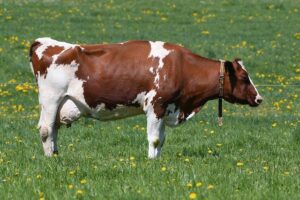As spring blossoms and the days grow warmer, millions of allergy sufferers brace themselves for the annual onslaught of sneezing, itchy eyes, and nasal congestion. The culprit behind much of this seasonal misery? A pervasive blanket of yellow pollen drifting through the air. But just how long will this pollen persist, and when can those affected finally expect relief? Today, we delve into the latest forecasts and expert insights to uncover when allergy season is likely to taper off and bring respite to pollen-weary communities.
Understanding the Timeline of Allergy Season and Pollen Peak
Allergy season varies widely depending on geographic location and the types of plants native to the area. Generally, it begins in early spring when trees start to pollinate, continues through late spring and summer with grasses, and can extend into the fall with weed pollens. The infamous yellow pollen, often originating from trees such as birch, oak, and pine, tends to peak during the spring months. Weather patterns, temperature fluctuations, and rainfall all influence the intensity and duration of the season, sometimes causing unexpected early or late peaks.
To better visualize this, consider the following typical pollen peak timeline across common allergens:
| Plant Type | Peak Months | Common Symptoms |
|---|---|---|
| Tree Pollen | March – May | Sneezing, itchy eyes, congestion |
| Grass Pollen | May – July | Runny nose, throat irritation |
| Weed Pollen | August – October | Coughing, wheezing, fatigue |
- High pollen counts typically occur on warm, dry, and windy days.
- Rainfall often temporarily reduces pollen but can lead to a sudden increase afterward.
- Using local pollen forecasts can help you time outdoor activities to minimize exposure.
Identifying the Most Common Sources of Yellow Pollen in Spring
During spring, the skies often fill with a fine, yellow dust that signals the onset of allergy troubles for many. This vibrant yet troublesome pollen originates predominantly from trees, grasses, and weeds that thrive in warmer weather after winter’s retreat. Among the chief offenders are oak, pine, and birch trees, which release massive amounts of pollen into the air as they bloom. These particles, carried by the wind, easily infiltrate homes and public spaces, triggering sneezing, congestion, and itchy eyes for sensitive individuals.
Understanding the major contributors to yellow pollen can help allergy sufferers prepare and manage symptoms more effectively. Below is an overview of common sources and their typical pollen seasons:
| Source | Peak Pollen Season | Allergen Impact |
|---|---|---|
| Oak Trees | March – May | High |
| Pine Trees | April – June | Medium |
| Birch Trees | April – May | High |
| Grass Species | May – July | High |
| Weeds (e.g., Ragweed) | August – September | Very High |
- Tree pollen often causes the first wave of allergies in early spring.
- Grass pollen takes over later as temperatures rise.
- Weeds contribute significantly later in the season but are powerful irritants.
Effective Strategies to Minimize Exposure During Peak Allergy Periods
To significantly reduce pollen exposure, it’s vital to remain vigilant about both indoor and outdoor environments during peak allergy times. Wearing high-quality masks during outdoor activities can effectively block airborne pollen particles, especially on windy days or when mowing the lawn. Additionally, keeping windows closed and running air purifiers with HEPA filters inside your home helps trap airborne allergens before they infiltrate your living space. Frequent washing of bedding and clothing further prevents pollen buildup, minimizing the chances of allergens lingering on your skin or fabric surfaces.
Planning daily routines around pollen forecasts can provide an added layer of protection. Generally, pollen counts peak early in the morning and late afternoon, so scheduling outdoor exercise or chores for midday or after rain showers can lessen exposure. Utilize apps or websites that deliver real-time pollen counts to stay informed. The table below summarizes peak pollen times and recommended avoidance strategies:
| Time of Day | Pollen Level | Suggested Action |
|---|---|---|
| Early Morning (5-10 AM) | High | Stay indoors, wear masks if outside |
| Midday (11 AM-2 PM) | Moderate-Low | Safe for outdoor activities |
| Late Afternoon (3-6 PM) | High | Limit outdoor exposure |
| Evening (7 PM onwards) | Low | Ideal for outdoor time |
When to Expect Relief and Steps to Manage Symptoms Safely
Typically, allergy symptoms caused by pollen start to ease within a few weeks after the peak pollen season passes, which varies depending on your geographic location and the type of pollen involved. For many regions, relief begins in late spring or early summer as trees and grasses finish pollinating. Monitoring the local pollen count daily through weather apps or specialized websites helps anticipate symptom fluctuations and plan outdoor activities accordingly.
To manage symptoms safely while waiting for pollen levels to drop, consider these key steps:
- Keep windows closed during high pollen days to reduce indoor allergens.
- Use air purifiers fitted with HEPA filters to improve indoor air quality.
- Rinse nasal passages with saline sprays or neti pots to clear allergens.
- Wear sunglasses and masks outdoors to block pollen contact.
- Consult with healthcare providers before starting or changing allergy medications.
| Symptom | Expected Relief Timeline | Recommended Action |
|---|---|---|
| Sneezing & Runny Nose | 2-3 weeks post-peak | Use antihistamines & saline nasal sprays |
| Itchy Eyes | 1-2 weeks post-peak | Apply allergy eye drops & wear sunglasses |
| Fatigue & Headache | Variable; up to 4 weeks | Rest well & consult doctor if persistent |
In Summary
As allergy season gradually winds down and the persistent presence of yellow pollen begins to fade, many sufferers can look forward to relief in the coming weeks. While exact timing varies by region and weather conditions, experts generally agree that the worst of the pollen storm typically subsides by late spring to early summer. Staying informed about local pollen forecasts and taking appropriate precautions can help ease symptoms until nature’s seasonal cycle brings a welcome reprieve. For now, patience and preparedness remain the best tools against the airborne allergens that mark this challenging time of year.













